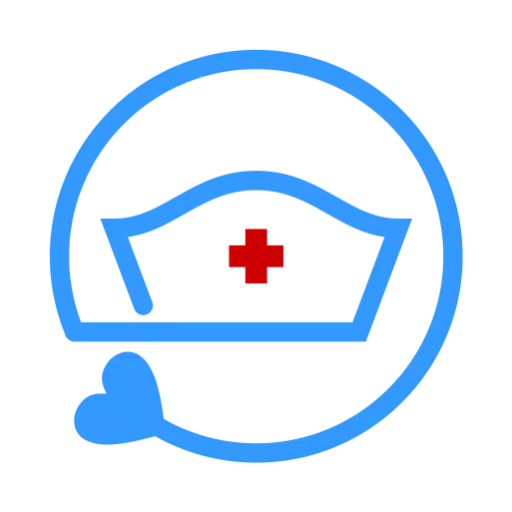Last updated on December 28th, 2023
Introduction
In this article, you’ll learn about prednisone nursing implications and patient teachings. Also, its dosage, indication, side effects. Nursing implications include nursing assessment, nursing intervention, nursing diagnosis, and evaluation for prednisone.
Generic Name: Prednisone
Brand Names: Intensol, Rayos, Deltasone, Sterapred, Prednicot, Winpred
Prednisone Class and Category
Pharmacologic class: Glucocorticoid
Therapeutic class: Immunosuppressant, Anti-inflammatory
Pregnancy category: D
Prednisone Dosage
- Common uses
Adults: initial dose, PO: 5-60 mg/day in single or divided doses.
Children: PO: 0.1-0.15 mg/kg/d in single or divided doses. Maximum dose: 60 mg/day.
- To treat adrenal insufficiency, acute and chronic inflammatory disorder as well as immunosuppressive disorders
Adults: 5 – 60 mg/day, single or in divided doses.
Children: 0.5 – 2 mg/day, single or in divided doses. Maximum dose: 80 mg/day
- To treat multiple sclerosis
Adults: 200 mg/day for 1 week, then 80 mg alternate days for 1 month.
- To treat Nephrotic syndrome
Children: PO: 2 mg/kg/day, in divided doses, until the urine is protein-free for 3 days in a row, then, 1-1.5 mg/kg on alternate days for the next 4 weeks.
- To control Asthma exacerbation
Adults/adolescents: PO: 40-80 mg/day; single or in divided doses, until PEF reaches 70% of anticipated value or personal best.
Children: PO: 1 mg/kg/day (maximum dose: 60 mg); BD, until PEF reaches 70% of anticipated value or personal best.
Prednisone Pharmacokinetics and Pharmacodynamics
| Route | Onset | Peak | Duration |
| PO | Rapid | 1 – 2 hours | 1.25 – 1.5 days |
| PO (Delayed release) | unknown | 6 – 6.5 hours | 24 – 36 days |
Absorption: Prednisone is effectively absorbed from the GI tract when taken orally.
Distribution: Protein binding is 70-90%.
Metabolism: Hepatic.
Half-life: 2.5 – 3.5 hours.
Excretion: Primarily excreted via urine.
Prednisone Mechanism of Action
Prednisone inhibits inflammatory and immunological responses by binding to intracellular glucocorticoid receptors and acting through the following mechanisms:
- Inhibiting neutrophil and monocyte accumulation, as well as their phagocytic and bactericidal activities, are suppressed at the site of inflammation.
- Stabilization of the lysosomal membrane.
- Inhibiting macrophage and helper T cell antigen response
- Suppressing the production of inflammatory response mediators such cytokines, interleukins, and prostaglandins.
Therapeutic effects of prednisone:
- Prevents or hinders cell-mediated immune responses.
- Lower or blocks tissue reactivity to the inflammatory process.
What are the indications of prednisone?
Prednisone indications include:
- To treat allergic conditions (e.g.; Atopic dermatitis, drug hypersensitivity reactions, seasonal or perennial allergic rhinitis)
- To treat dermatologic diseases, such as contact dermatitis, exfoliative erythroderma mycosis fungoides, pemphigus.
- To treat endocrine disorders, such as congenital adrenal hyperplasia, hypercalcemia of malignancy, nonsuppurative thyroiditis.
- To treat acute episodes of Crohn’s disease.
- To treat acute episodes of ulcerative colitis.
- To treat hematologic diseases, such as acquired (autoimmune) hemolytic anemia, Diamond–Blackfan anemia (DBA), pure red cell aplasia.
- To treat neoplastic conditions, such as acute leukemia, aggressive lymphomas.
- To treat certain ophthalmic conditions (e.g.; Sympathetic ophthalmia and uveitis).
- After organ transplant to prevent organ rejection.
- To treat inflammatory pulmonary condition (e.g.; COPD, asthma).
- To treat renal conditions such as nephrotic syndrome.
- To treat certain rheumatologic conditions, such as acute gouty arthritis, psoriatic arthritis, relapsing polychondritis, rheumatoid arthritis.
- To treat severe infectious diseases, such as trichinosis with neurologic or myocardial involvement, tuberculous meningitis.
- Off-label uses include prevention of post-therapeutic neuralgia, acute pain relief from herpes zoster, autoimmune hepatitis.
What are the contraindications of prednisone?
The contraindications of prednisone are:
- Hypersensitivity to prednisone or its components
- Fungal infections
- Psychosis
- Peptic ulcer
Caution:
DM, renal disease, HF, MI, hypertension, osteoporosis; seizures, cataracts, glaucoma.
Prednisone Interactions
Drug interactions
- Prednisone along with Aminoglutiamide causes corticosteroid-induced adrenal suppression
- Prednisone metabolism increases with CYP3A4 inducers (such as barbiturates, phenytoin, carbamazepine, rifampin).
- Prednisone metabolism decreases with CYP3A4 inhibitors (such as ketoconazole, macrolide antibiotics)
- Cholestyramine increases prednisone clearance.
- Prednisone with digoxin increases risk of arrythmias and digitalis toxicity due to hypokalemia.
- Live vaccine with prednisone may lead to loss of antibody response and increased risk of neurologic complications.
- Corticosteroids increases blood glucose levels; therefore, insulin and oral antidiabetic dose needs to be adjusted accordingly.
- Prednisone use with NSAIDs increases risk of GI ulceration and bleeding.
- Prednisone may decrease the effectiveness of warfarin.
- Prednisone reduces blood isoniazid levels.
- Parental administration of Amphotericin B with corticosteroids can cause cardiomegaly and congestive heart failure.
- Concomitant use of corticosteroids with anticholinesterase agents may cause severe weakness in patients with myasthenia gravis.
- Alcohol, salicylates, cyclosporine, and diuretics increase the adverse effects of prednisone.
Lab interactions
- Prednisone increases serum cholesterol, serum sodium, blood glucose, uric acid, urine glucose.
- Prednisone decreases serum calcium, serum potassium, T4, T3, thyroid 131I uptake test, urine 17- OHCS and17-KS, PBI.
- Prednisone may induce false-negative result in skin allergy tests.
Herbal/food interactions
- Food high in sodium may lead to increased fluid retention and edema and hypertension.
- Echinacea and ephedra (ma huang) may decrease therapeutic effectives of prednisone.
What are prednisone side effects?
Prednisone side effects / adverse reactions include:
- Insomnia
- Heartburn
- Nervousness
- Abdominal distention
- Diaphoresis
- Acne
- Mood swings
- Increased appetite
- Facial flushing
- Delayed wound healing
- Increased susceptibility to infection
- Diarrhea/ constipation
- Headache
- Edema
- Change in skin color
- Urinary frequency
- Tachycardia
- Rash
- Urticaria
- Depression
- Hallucination
- Glaucoma
- Osteoporosis
Life-threatening adverse effects: GI perforation; Circulatory collapse; Pancreatitis; Adrenal insufficiency; Embolism; Anaphylaxis; Angioedema.
Prednisone Nursing Implications [Nursing Considerations]
Prednisone nursing considerations are divided into nursing assessment, interventions, and evaluation.
Prednisone Nursing Assessment
- Obtain comprehensive medical and psychiatric history.
- Monitor vital signs and body weight.
- Assess for the signs of infection (such as oral Candida infection).
- Evaluate for signs of adrenal insufficiency (such as hypotension, weight loss, weakness, nausea/vomiting, anorexia, lethargy, disorientation, restlessness) before and periodically during corticosteroid therapy.
- Obtain baseline CBC, TFTs, Lipids, electrolytes, blood glucose, and plasma cortisol level.
Prednisone Nursing Diagnosis
- Risk for infection
- Risk for hyperglycemia
- Disturbed body image
Prednisone Nursing Interventions/ Actions
- DO NOT confuse PredniSONE with prednisoLONE.
- Administer prednisone once daily in the morning to match the body’s normal cortisol secretion schedule.
- Monitor for signs of adrenal insufficiency (such as hypotension, weight loss, weakness, nausea/vomiting, anorexia, lethargy, disorientation, restlessness) before and periodically during corticosteroid therapy.
- Monitor regularly for signs and symptoms of heart failure and hypertension because prednisone can produce many adverse reactions.
- Monitor intake and output. Watch for decreased urine output, increased edema, rales, and crackles.
- Measure daily weight. Notify prescriber if weight gain is more than 5 lbs per week.
- Monitor growth pattern in children. Prednisone may cause growth retardation.
- Monitor for hypothalamic-pituitary-adrenal suppression caused by prolonged use of prednisone.
- Monitor the patient’s temperature frequently for early detection of sign of infection.
- Periodically monitor serum potassium, blood glucose, WBC, urine glucose, plasma cortisol during long-term therapy.
- Periodically reassess the mental status (affect, mood, behavioral changes, aggression, hallucination).
Evaluation
Evaluate the effectiveness of prednisone:
- For decreased presenting symptoms with few/no systemic adverse effects.
- For decreased inflammation and immune responses to autoimmune disorders, allergic reactions, and neoplasms.
- For ease of respiration.
Pregnancy/breastfeeding considerations for prednisone
- Corticosteroid crosses placental barrier. It is also linked to an increased incidence of fetal cleft palate, especially when taken during the first trimester.
- Prednisone should be used with caution during pregnancy only if benefit to mother outweighs potential risk to fetus.
- Monitor the newborn for hypoadrenalism, if mother has received corticosteroid therapy during pregnancy.
- Consult with the physician before lactation since corticosteroid is excreted in breast. High doses for corticosteroid could interfere with endogenous corticosteroid production, suppress growth, or cause other adverse effects in the breastfed infant.
What are the nurse patient teachings for prednisone?
The prednisone nurse teaching for patients should include the following points.
- To decrease gastrointestinal irritation, instruct the patient to take prednisone with food in the morning as prescribed.
- Instruct the patient not to break, divide, or chew delayed-release tablet form because the delayed-release action is dependent on an intact coating.
- Advise the patient/family not to stop taking prednisone abruptly. Teach the adverse effects of abruptly discontinuing therapy.
- Instruct the patient/family to avoid OTC products such as salicylates, cough products with alcohol, cold preparations unless directed by prescriber.
- Encourage patient to stop alcohol consumption during therapy. Because it increases risk of gastrointestinal ulcers, bleeding, and delirium.
- Educate the patient to avoid exposure to contagious infections because he/she is at higher risk of acquiring infection due immunosuppression.
- Instruct the patient to notify prescriber immediately about possible exposure to measles or chickenpox.
- Teach the patient/family about adverse effects of prednisone. And to seek medical attention immediately in case of severe abdominal pain or tarry stools.
- Also, to notify prescriber about visual disturbances, swelling, weight gain, tiredness, bone pain, bruising, nonhealing wounds, or r behavior changes.
- Tell the patient to avoid vaccination during corticosteroid therapy without consulting with the prescriber.
- Teach diabetic patients to regularly monitor their blood glucose levels because corticosteroids are associated with hyperglycemia. And anti-diabetic drug doses may need to be increased.
- Inform the patient that if symptoms of the underlying disease recur or worsen, he/she should notify the prescriber.
- Advice patient to avoid hazardous activities until drug’s central nervous system effects are known.
- Inform the patient that follow-up visits are essential to examine drug’s effectiveness and detect any adverse effects.
- Encourage the patients on long-term corticosteroid therapy to take a high-protein, calcium-and-potassium-rich diet that is low in salt and carbohydrates.
- Advise the patient to carry emergency ID (information about product taken and condition) as corticosteroid user.
- Tell the patient to report signs of infection or injury for up to 12 months after therapy.
Conclusion
You learned about prednisone nursing implications and patient teachings in this article. In addition, you’ve learned about prednisone’s mechanism of action, pharmacokinetics, dosage, indications, contraindications, and side effects.
Recommended Readings & Reference
Australian TGA Prednisone (LODOTRA) Information
FDA Prednisone (RAYOS) Information
Kee, J., Hayes, E., & McCuistion, L. (2015). PHARMACOLOGY A Patient-Centered Nursing Process Approach (8th ed.). Elsevier Inc/Saunders.
Kizior, R., & Hodgson, K. (2021). SAUNDERS NURSING DRUG HANDBOOK 2021. Elsevier Inc.
Jones & Bartlett Learning. (2021). Nurse’s Drug Handbook (20th ed.). Jones & Bartlett Learning, LLC.
Skidmore-Roth, L. (2021). MOSBY’S 2021 NURSING DRUG REFERENCE (34th ed.). Elsevier Inc.


